Lift Your Head and Lower Your Arms — You Might Just Feel Better
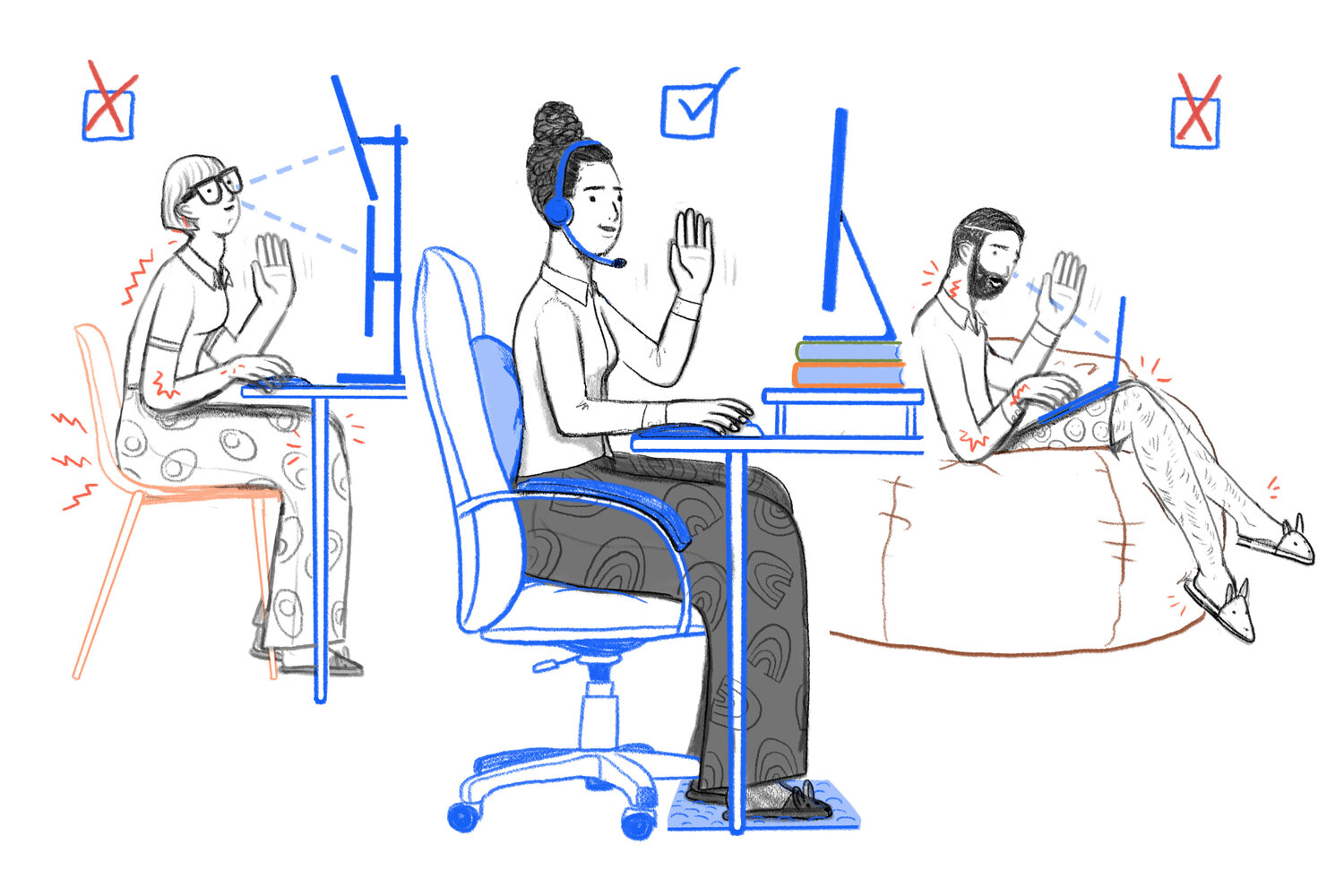
If you’re working or learning from home, you know the toll it can take on your body and mind. You might not have a supportive chair to sit on or the most comfortable tech to accommodate long hours in front of a computer at home. But you don’t have to suffer through it, and you don’t necessarily have to spend a ton of money on a solution.
Meg Honan is a professional ergonomist and Environment, Health, and Safety specialist for the Department of Occupational Medicine at University of California San Francisco. She’s got a few tips to improve home office setups and encourage healthy working habits.
Lift your head and lower your arms
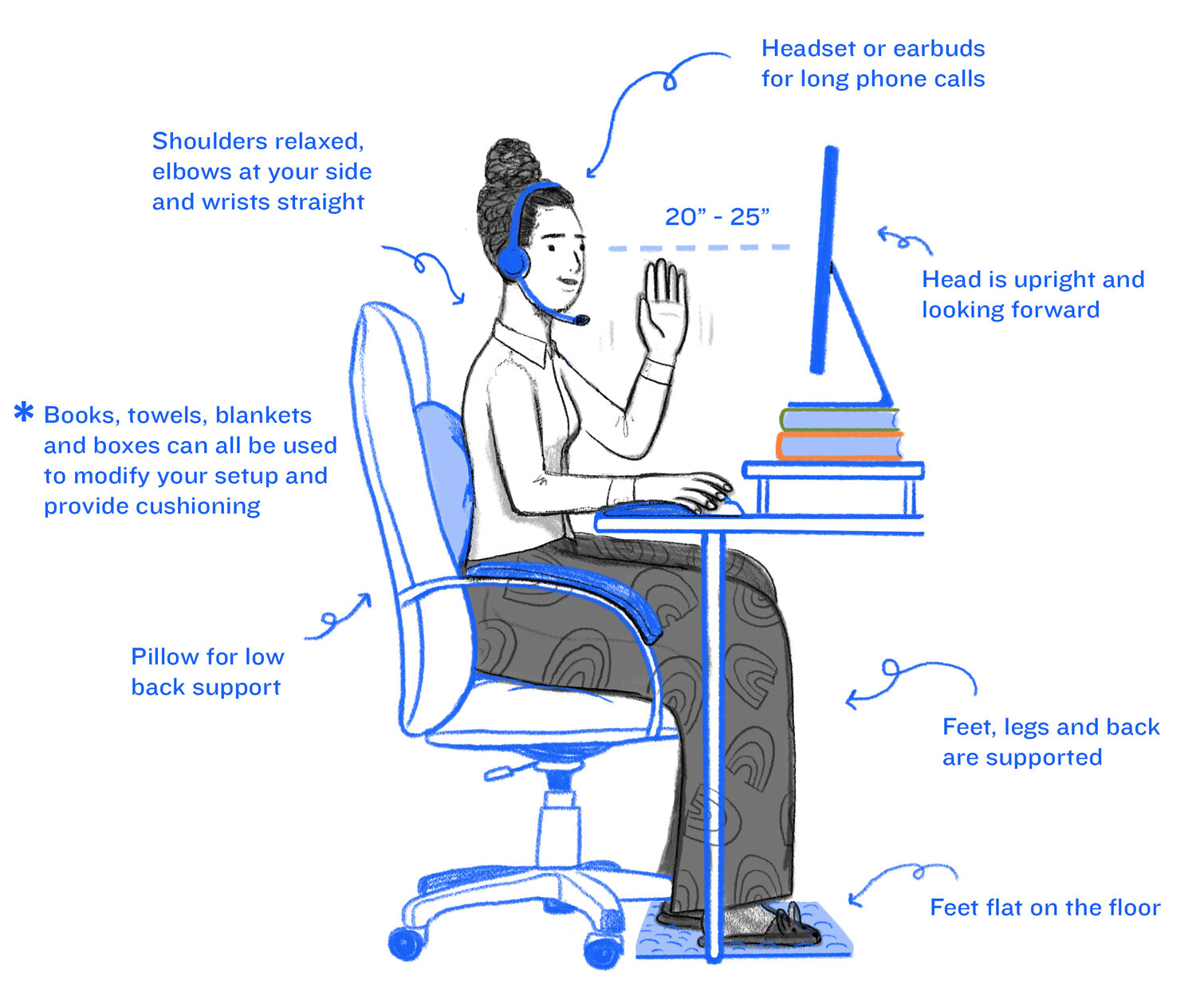
LA Johnson/NPR
Your monitor screen should be at eye level so you’re not craning your head down to see. And, your keyboard and mouse should be low enough so you’re not shrugging your shoulders and lifting up your arms like a praying mantis to type and click.
Honan says this common “head down and arms up” position sets you up to feel “achy, sore and tired.” To combat this uncomfortable and oftentimes painful position, lift your head from your neck and lower your arms to work from a more natural posture.
One way to do this is to split up or reposition your tech. Bring your laptop or desktop monitor screen up to eye level with a stack of books or some other platform.
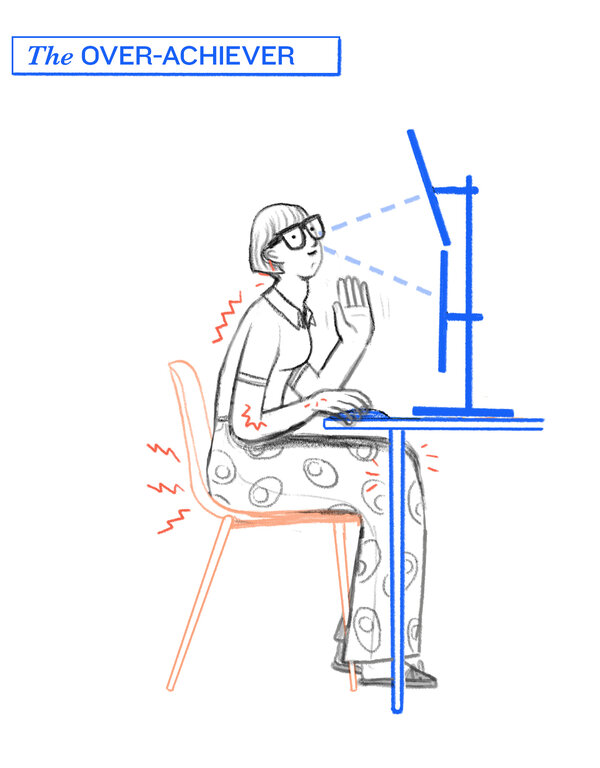
LA Johnson/NPR

LA Johnson/NPR

LA Johnson/NPR
Place your keyboard and mouse at a lower height where you don’t have to shrug your shoulders to use them. If your keyboard is attached to your laptop, consider connecting an external keyboard and mouse so you can lift your head and lower your arms. External mouses don’t just help lower our arms, but they also prevent the constant strain of using a trackpad.
Support yourself
Honan says that the best height for your arms to work is about 26 to 27 inches – that’s two to five inches shorter than your average desk or table. To make up for this difference, sit on a pillow or raise the height of your chair so you can lower your arms to a more comfortable position.
Support your lower back by placing a pillow at the small of your back and positioning your feet on some sort of platform. A box, a stack of books or a sturdy pillow would all work.
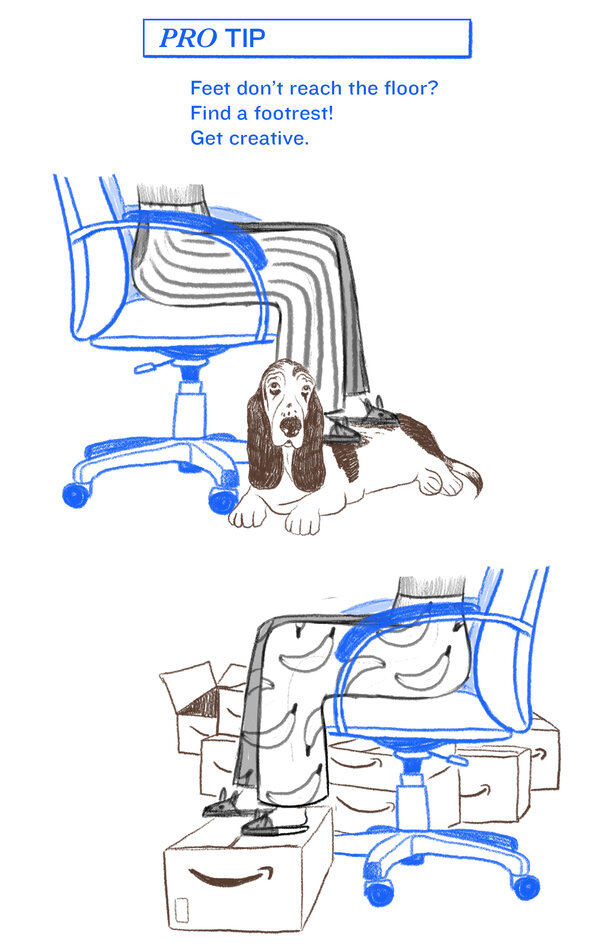
LA Johnson/NPR
Flexible seating (like an exercise ball) can be a nice change of pace, but it won’t support your body in the long term. If you’re sitting, opt for a chair with two arms. If it’s adjustable in height or in the lower back area, that’s even better!
If you typically work with a laptop in your lap, get a flat service that can sit across your chair’s arms. You can use a shelf from a bookcase you’re not using, a baking pan or a cutting board.
If you’d like to stand for a while, convert an ironing board into a standing desk. Get creative!
Switch positions

LA Johnson/NPR
At the office, you might walk to meeting rooms, leave the building to get a cup of coffee, or cross the building to use the restroom.
At home, Honan warns, “you’re actually far more sedentary than when you’re in an office.”
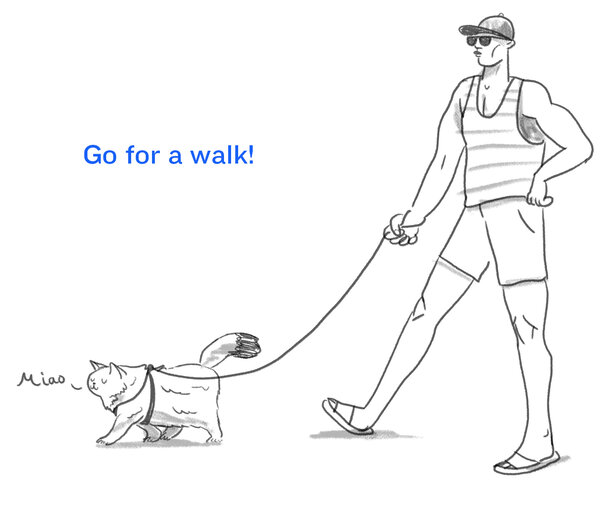
LA Johnson/NPR
One way to make movement a habit is to switch positions every time you pick up a new task. Need to make a phone call? Walk around while you’re on the phone. Joining a video call on your laptop? Pick it up and put it on a bookshelf while you stand.
According to Honan, a popular phrase among ergonomists is “the next posture is the best posture.” So, think of all the different ways you can position yourself and your body will thank you.
Stretch

LA Johnson/NPR
Stretch
If your limbs shrink inward and your back becomes more slouched as the day goes on, move your body in the opposite direction it gets stuck in.
If you’re finding yourself crunching up your body, stretch “like a starfish,” says Honan. “Get up, put your arms back and allow your body to use its normal range of motion, not just the part that curls up like a ball.”
Take a walk to reset your joints and muscles and give your body a change of pace.
If it helps, set a timer for movement. Or create a solid goal, like a 30-minute walk or workout at the end of the workday.
Pay attention to discomfort
We all have aches and pains sometimes. Hopefully, they go away with time. But, if your pain continues to build over the course of a week, or if it doesn’t go away overnight or over a weekend, “that’s when you need to really pay attention,” says Honan. “That means…you’re starting to sustain something that could be more worrisome and really needs your attention.”
“Don’t wait that long,” says Honan. “By the time you’re feeling pain and discomfort, you’re already paying a price.”
You’re a person, not a product
Paying attention to ergonomics isn’t just about making you more efficient, it’s about making sure that you feel good and wholly yourself when you’re working – so you have the time and energy to do all the things you want to do outside of your job.
“Good work done in the easiest amount of time, the shortest amount of time… that allows you more time for everything else that makes you, you,” says Honan.